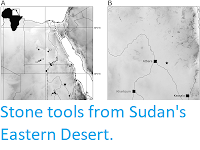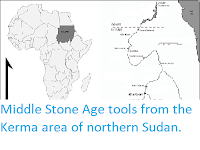The mountain ranges of the northeastern Iranian Plateau have an abundant supply of water and mineral resources, and are believed to have been used by early Humans and other Hominins dispersing out of Africa as a route into Central Asia. This area was explored by outside archaeologists in the 1960s and 1970s, but this activity ended with the Iranian Revolution of 1979. In the past decade home-grown Iranian archaeologists have begun to explore the same region, making new discoveries about the ancient peoples who lived there. Although a variety of sites in this region have yielded palaeolithic material, only a single likely dwelling has been found, at Keyaram Cave in Gorgan, close to Caspian Sea.
In a paper published in the Journal of Anthropological And Archaeological Sciences on 10 January 2022, Ali Sadraei of the Ronin Institute, Mahya Azar of the University of Neyshabur, and Alireza Bahmani and Hamzeh Ghobadizadeh of the Department of Archaeology at the University of Tehran, provide a preliminary description of a newly discovered rock shelter at Borselan in the middle of intermountain valleys of the northern edge of the Binalud Mountain chain.
The Borselan Rock Shelter is located about 700 m to the northwest of the village of Borselan (برسلان) in the Central District of Quchan County in Razavi Khorasan Province. This lies within a roughly 11 km long, northwest-southeast trending intermountain valley within the Binalud Mountain Range. The valley has numerous streams and is well vegetated, as well as outcrops of diorite, which can be used to make stone tools, and would presumably have been an attractive environment to Palaeolithic peoples moving through the area.
The rock shelter is 7 m wide, a little over 280 cm high at its highest point, and about 3 m deep. Preliminary excavations there have produced 31 stone tools, the majority of which are basalt, and consistent with a Middle Palaeolithic Levallois Technology (a technology in which initial flakes are chipped away from a central core, in order to produce a worked core from which more specialized flakes can be chipped for use as tools).
The lithic material from Borselan can be categorised into four groups; cores, flakes, retouched pieces and debris. The most abundant pieces are cores (13) and flakes (12), which Sadraei et al. suggest could be evidence that the rock shelter was used as a workshop for the manufacture of stone tools. One of the tools is particularly noteworthy, being a two-sided tool is 10 cm long and 8 cm wide, with observable negative removals on its surface.
See also...



Follow Sciency Thoughts on Facebook.
Follow Sciency Thoughts on Twitter.







